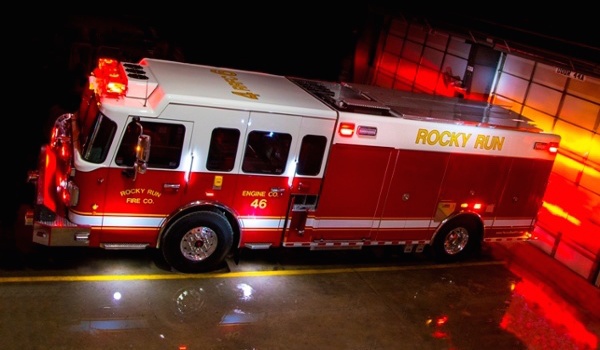With the average new fire apparatus purchase costing well into the six-figure range, it’s easy to see why departments are very budget-conscious when investing in a new addition to their fleet. The price difference between a fully loaded custom rig and a standard, minimum-frills stock unit can be well over $150,000, and that money can often go a long way to support other areas of the municipal budget.
While it’s impossible to deny that some expensive features of the rig are absolutely necessary, it’s important that you don’t blow your budget on the fancy frills your apparatus doesn’t need. Budget concerns are the #1 reason why governing bodies don’t approve apparatus purchase proposals, so you have to make sure your expenses are justified when designing your rig.
To help control the cost of your apparatus when designing under a tight budget, make sure you follow our tips below for avoiding unnecessary frills and getting the most bang for your buck:
Performing an Apparatus Needs Assessment
Before you start figuring out all the features you want to include on your truck, it’s important that you run through a needs assessment check to figure out the features that you actually need. As a matter of fact, we’ve already outlined the 9 questions you need to ask.
Once you’ve answered the questions in the link above, your apparatus purchasing committee should have a much better understanding of the features you can’t design your rig without. From here, you can figure out how much these features will cost, how much budget will be left afterwards, and what extra features would maximize the efficiency of your apparatus while also keeping costs down.
Avoiding Unnecessary Frills
While certain frills like complex, custom graphics and chrome plating are obvious luxuries to be mindful of, there are several other features that departments can save on as well. Here are a few examples:
Custom vs. Commercial Chassis
When it comes to saving money on your fire apparatus design, choosing commercial over custom will almost always help you save. And when it comes to chassis, an entry-level custom chassis will cost about $30,000 more than a commercial option. That being said, you have to remember that the OEM will likely have to make modifications to the commercial chassis in order for it to work with your apparatus. The added labor costs for these modifications can add up quickly, so make sure you weigh your options wisely.
Storage Compartments
The more you customize your storage compartments, the more they’re going to cost. Likewise, the larger you make them, the more they’re going to cost as well. If you want to minimize your costs and maximize your compartments’ functionality, start by making your compartments the same size, and using basic shelving options. By making them the same size and using the same shelves, you’ll be able to use shelves interchangeably between compartments – allowing for a flexible design.
Light Systems
While you might be tempted to cover your apparatus in flashing warning lights, there’s really no need to exceed the NFPA 1901 requirements. With all the different lighting options available these days it’s easy to go overboard on lighting packages, so it’s best to just stick with what you need.
Air Horns and Sirens
If you’re looking to save money on your audio warning devices, an electrical siren is the most cost effective way to go. It’s also easier on the electrical system than a mechanical siren.
Pumps and Discharges
According to NFPA 1901, Pumpers are required to have a specific number of discharges per each pump’s gpm rating. If your truck has a 750-gpm pump, it would only require three 2½-inch discharges, or one 5-inch discharge. While it might be more functional to have multiple discharges on each side of your truck, more discharges means more valves, plumbing, operating mechanisms, gauges, labor, and much more. If you’re looking to keep costs down, you should try to limit the number of discharges on your rig.
Purchasing a Demo Unit
Another way to save on your apparatus purchase is by buying a demo apparatus. In fact, compared to a custom-built apparatus, a demo unit can reflect savings of up to 5%. Demo units aren’t built to follow a department’s custom design (unless it’s a pre-sold demo), and there’s usually fewer customized components on the rig as well. However, that’s not to say demo units aren’t loaded with the latest technology from vendors. Apparatus manufacturers build their demos to showcase their new features and best vehicle offerings, so it’s a convenient way to get a great rig for a great price.
Take for example our new RPM-PF Rescue Pumper Demo Unit, which is packed with lots of new features and innovations. It’s by far the most comfortable and technologically advanced rescue pumper we’ve ever built.
To learn more about our no-frills apparatus options, please talk to your nearest Marion dealer, or contact us personally at (715) 754-5261.
